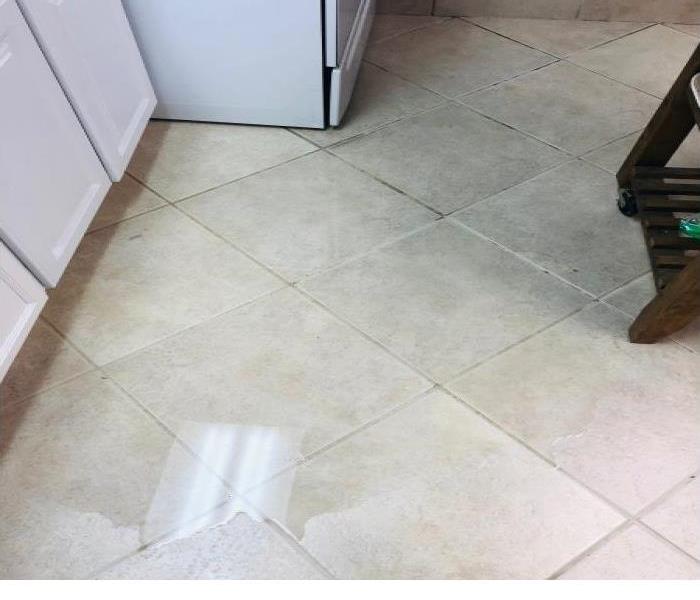California Water Damage and Renter’s Rights
3/7/2019 (Permalink)
California renter’s rights protect tenants from expensive repair costs, including water damage.
Southern California experienced torrential rains ... forcing hundreds of residents to evacuate, opening sink holes and causing dangerous mudslides — one of the strongest storms in years for the area.
Most cities have fire departments willing and able to help when flood emergencies arise, especially if the situation is life-threatening. Flooding can cause electrical hazards. "Never turn power on or off yourself or use an electrical tool or appliance while standing in water," warns the National Center for Disease Control website.
Many buildings have an electrical shut-off box outside the unit on a main electrical panel. Find out where the electric shut-off switch is before a disaster.
Another concern is contamination from sewage in standing water. "Discard food that may have been in contact with floodwaters," recommends the Governor's Office of Emergency Services (www.oes.ca.gov).
Once the water flow has been staunched, there probably will be damage to repair.
"Tenants have a right to decent housing, free from habitability or code violations," said Ron Brown, director of the Human Rights and Fair Housing Commission in Sacramento.
Both state and local housing codes require landlords to maintain their property for renters in habitable condition. This covers dwelling needs that include effective waterproofing, weather protection and heating facilities that are in good working order.
Most laws focus on health and safety issues. Basic details can be found through the California Department of Consumer Affairs site at www.dca.ca.gov/legal/landlordbook.
Tenants have a duty under state law to inform the landlord promptly of needed repairs, preferably in writing. Vivid details, such as "water is coming in through my front door through a low spot when it rains," are useful. If possible, take photographs of the problem. Follow up with a friendly phone call.
Although tenants on the scene can stem the tide of damage, repairs should not be undertaken without going through proper channels.
State law allows landlords about 30 days to do most repairs. What if the landlord ignores written notice for flood or other repair work? If a unit is uninhabitable and 30 days have passed, tenants have several options, including making repairs and deducting them from the rent, withholding the rent, suing the landlord and moving.
Under State Civil Code 1941, the repair-and-deduct remedy may be applied only twice in a 12-month period and cannot exceed the monthly rental amount.
What if a tenant thinks the rent should be withheld because the place is uninhabitable? If damage amounts to more than two months' rent, be prepared to provide proof. And be aware that putting a dollar value on the inconvenience of wet carpet and fans running 24 hours to dry it out may be tricky to prove.
If rent is withheld, the situation can get complicated. According to the California Department of Consumer Affairs, "if a landlord brings an eviction action against a tenant for nonpayment of rent, and the unit is found to be uninhabitable, the landlord is liable to the tenant for reasonable attorney's fees and court costs."
Several new laws took effect Jan. 1, 2004. In a supplement to State Civil Code 1941.1, California law prohibits a landlord from collecting or demanding rent on an uninhabitable dwelling. The law also allows tenants to seek damages after inspection by a housing official. A notice of violation has to have been issued to the landlord, and the violation must have remained 60 days after the landlord received notice before a suit can be filed.
Consulting a legal professional is always a good idea before deducting rent or bringing a lawsuit.
To read this article from the Los Angeles Times cllick the link:
Suffering a water loss can be a hectic and stressful time. Emotions run high and often times you don’t even know where to start! The first step should always be to identify the source of incoming water then shutoff or stop the water source if possible. Next make sure to turn off all electrical appliances around the affected area to reduce electrical hazards and turn off the circuit breakers supplying electricity to the wet areas. You will want to remove excess water by mopping or blotting and make sure to never use a regular vacuum to remove water! Keep furniture safe from additional damage by placing aluminum foil or wood blocks between furniture legs and wet carpeting/flooring and make sure to call SERVPRO of West Riverside City at (951)-351-8033 to come assess the damage and get the drying process started immediately. Since we are locally owned and operated, we are able to respond quickly and with the right resources. A fast response lessens the damage, limits further damage, and reduces the restoration cost.






 24/7 Emergency Service
24/7 Emergency Service
